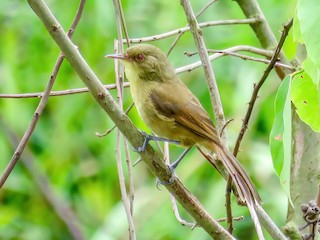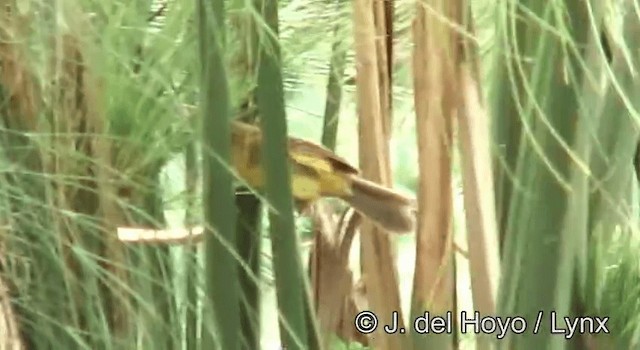Papyrus Yellow-Warbler Calamonastides gracilirostris Scientific name definitions
Sign in to see your badges
Species names in all available languages
| Language | Common name |
|---|---|
| Bulgarian | Папирусово шаварче |
| Catalan | busqueta groga dels papirs |
| Croatian | močvarni voljić |
| Dutch | Geelbuikrietzanger |
| English | Papyrus Yellow-Warbler |
| English (Kenya) | Papyrus Yellow Warbler |
| English (United States) | Papyrus Yellow-Warbler |
| Estonian | papüüruse-käosulane |
| French | Jaunerolle aquatique |
| French (Canada) | Jaunerolle aquatique |
| German | Papyrusspötter |
| Japanese | ハシボソキイロムシクイ |
| Norwegian | papyrusklorsanger |
| Polish | papiruśnik |
| Russian | Папирусовая бормотушка |
| Serbian | Papirusova grmuša |
| Slovak | sedmohlások šachorový |
| Spanish | Cloropeta Picofina |
| Spanish (Spain) | Cloropeta picofina |
| Swedish | papyrusgulsångare |
| Turkish | Sarı Papirus Ötleğeni |
| Ukrainian | Жовтовик тонкодзьобий |
Calamonastides gracilirostris (Ogilvie-Grant, 1906)
Definitions
- CALAMONASTIDES
- gracilirostris
The Key to Scientific Names
Legend Overview
Introduction
The Papyrus Yellow-Warbler is endemic to swamps, typically of papyrus, in the highlands of Central and East Africa; its populations are generally small, fragmented, and believed to be in strong decline, although there is no robust information from some parts of the range. Within its characteristic habitat, the Papyrus Yellow-Warbler really has no obvious confusion species. It is a medium-sized warbler with a strongly graduated tail, short rounded wings, a longish bill, and long slender toes, as well as warm brown or olive-green upperparts, dull yellow underparts, but no obvious facial pattern. The birds move around alone or in pairs, but virtually all aspects of the species’ life history and ecology are unknown. Two subspecies are recognized, but some taxonomists consider that they should be treated as separate species.












































